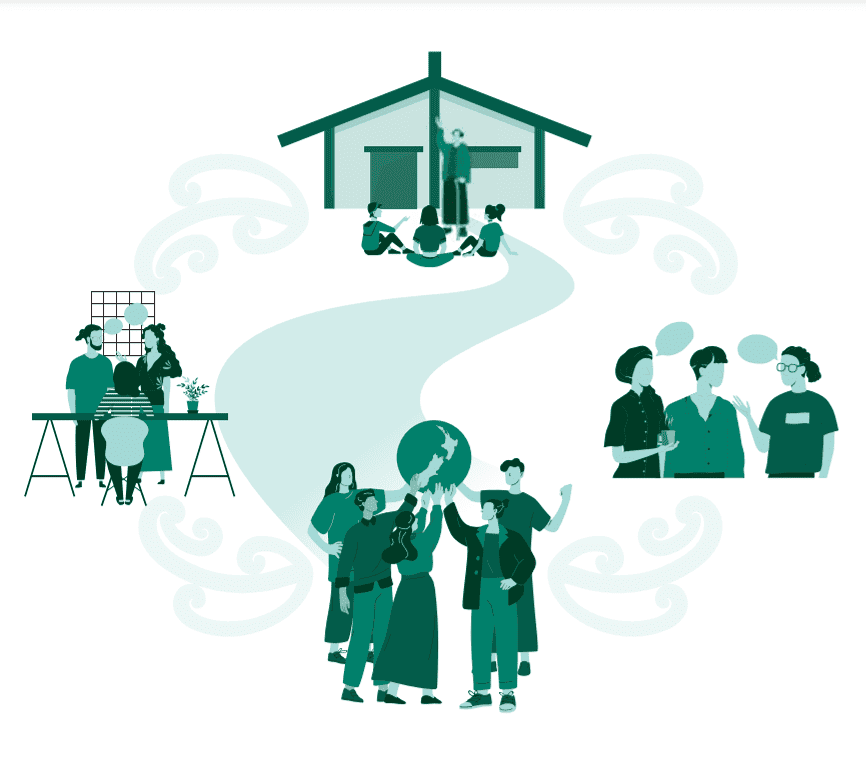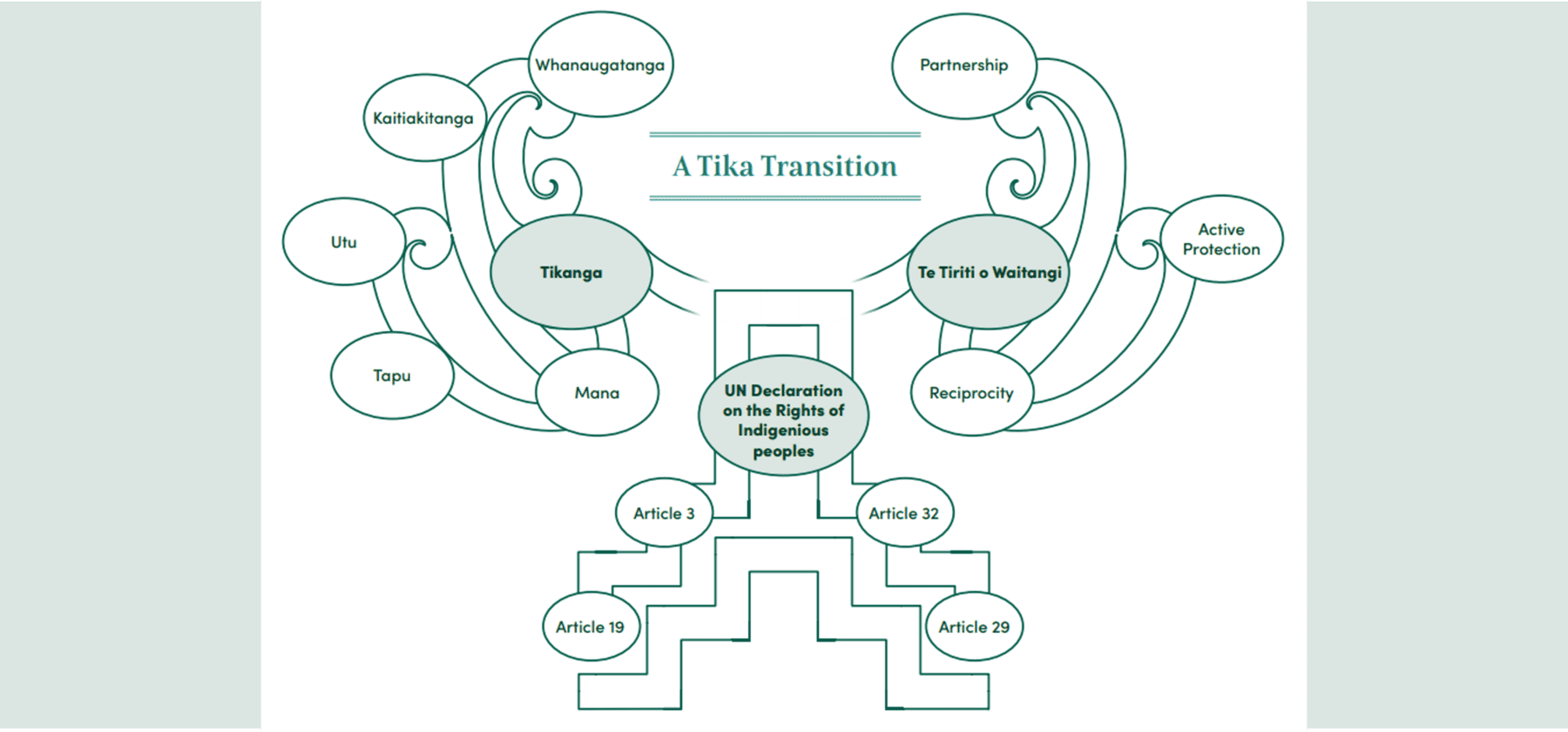As a pre-eminent researcher in Māori political representation and constitutional change, especially in relation to environmental politics and policy, Maria is often in a position where she is assessing consultation documents and proposals that seek to transition Aotearoa to a better environmental future. She conducts these assessments from a Māori perspective.
“If we want to have a low-carbon economy where we’re really attentive to sustainability in the environment, the process for getting there is as important as the end goal,” says Maria.
Maria realised that many of the questions she asked and the criteria she used to make her assessments kept coming back to the core areas of tikanga, Te Tiriti and the UN Declaration of the Rights of Indigenous Peoples (UNDRIP).
“I needed a guide to approach these assessments in a way that didn’t reinvent the wheel each time,” says Maria.

With no guide available, Maria decided to make one. This guide is available to all through the BioHeritage data repository. Here’s the link: A Tika Transition to a Flourishing Aotearoa.
The guide is a continuation of a chapter Maria wrote for the book A Careful Revolution: Towards a Low Emissions Future, edited by David Hall. It is grounded in the understanding that the transitions required to move towards a flourishing Aotearoa will need to be “tika”, which can be roughly translated as “just”, and includes respect for tikanga, Te Tiriti and UNDRIP.

The guide contains a toolbox that contains prompts that ask questions of the project, document, policy or action being assessed. These prompts are centred around aspects of tikanga, including whanaungatanga (relationships), kaitiakitanga (environmental guardianship), utu (balance), mana (authority) and tapu (a spiritual aspect to all things). The toolbox goes on to ask questions relating to Te Tiriti o Waitangi (with regards to partnership, active protection and reciprocity) and four specific articles (3, 19,29 and 32) from UNDRIP.
The toolbox is deceptively simple, with questions presented on one side and room for answers on the other. However, Maria is quick to point out that this tool should not be used as a tick-box exercise when a work is completed. Instead, it should be used to inform and direct work that is being conceptualised or is underway.
“These questions are an opportunity to evaluate the depth of commitment to each of the principles and explore how that commitment might be deepened,” says Maria.
Maria and the Me Tū ā-Uru team worked with the designers and artists at Ariki Creative to make the guide and toolbox into a user-friendly booklet that would be helpful for a range of different groups and communities.
The physical beauty of the booklet is intentional. Overlapping design components, such as puhoro, koru, and mangōpare, embody the fundamental values the guide contains. Their presence and placement further drive home the importance of using mātauranga Māori to achieve the aspiration for a Te Tiriti-focused Aotearoa that approaches necessary upcoming transitions in a way that is tika.
Jenny Leonard
